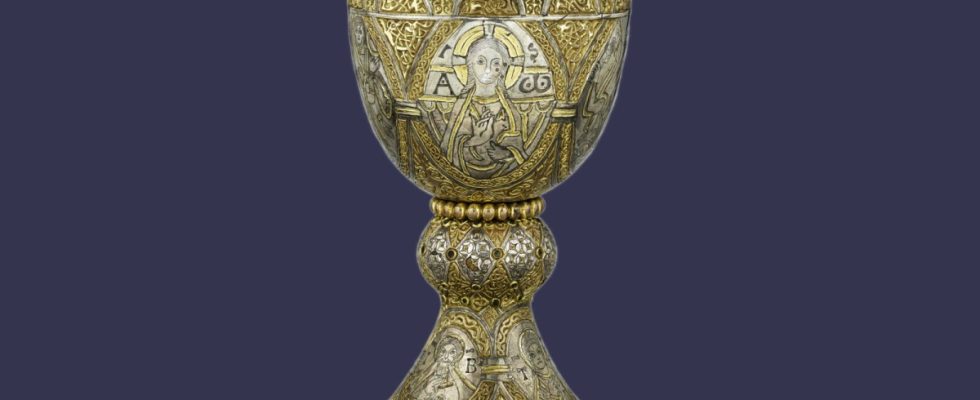It is truly a sensation that awaits visitors to the Bavarian State Exhibition in 2024. The show entitled “Tassilo, Korbinian and the Bear – Bavaria in the Early Middle Ages” can be seen from May 7th to November 3rd, 2024 in the Diocesan Museum on Freisinger Domberg. It tells the story of Bavaria around 724, when the diocese founder Korbinian first set foot in Freising 1,300 years ago, with many exhibits that have never been shown before. For the first time in 1000 years, the Tassilo Chalice, one of the most valuable works of art in Bavarian history, will also be shown in Bavaria. It is the largest treasure in the Austrian monastery of Kremsmünster, where it is closely guarded.
Richard Loibl, director of the House of Bavarian History, even dared to take an extremely valuable copy of this chalice out of a small black suitcase wearing white gloves when he presented the annual program at a press conference in Regensburg on Thursday. The original actually comes to Freising. “We will probably bring the Tassilo Chalice to Freising in April, taking all possible safety precautions,” said Loibl. When exactly this transport will take place and by what route will not be revealed.
According to the inscription, the chalice was donated by Bavarian Duke Tassilo III. (born around 741; died around 796). He was the last Bavarian duke from the Agilolfinger family and a cousin of Charlemagne. At that time, Bavaria was on the verge of becoming a powerful kingdom. It extended to South Tyrol, Upper Austria, Carinthia and Slovenia. The chalice was probably intended for the Salzburg Cathedral, which was newly consecrated in 774 and could have become the coronation and burial church of the Agilolfingers. Since 1964 it has been used again as a chalice – but only for important visitors, including when the Pope is a guest in Austria. So John Paul II and Benedict XVI. used the Tassilo chalice during her visits.
Northern Italian craftsmen probably created it in Salzburg, from where it came after the fall of Tassilo III. may have reached Kremsmünster in 788. At the state exhibition in the Freising Diocesan Museum, a separate room is even dedicated to this extremely valuable piece of Bavarian cultural history.
In 2024, Freising will celebrate the arrival of Saint Korbinian 1,300 years ago not only with the Bavarian State Exhibition, but with a whole series of events, activities and offers throughout the year. Pilgrimages to Freising’s partner community of Arpajon, Korbinian’s birthplace, and to Rome and South Tyrol are also planned. The city of Freising has been working with the archdiocese for months on an anniversary program, which will begin during the Palmdult (on March 16th/17th) with the unveiling of the large number with the numbers 1300 on Marienplatz and with the Korbinian Festival on November 25th scheduled to end in 2024. A highlight will be a historic anniversary parade through the city center on September 15th.

